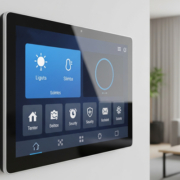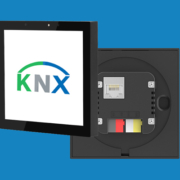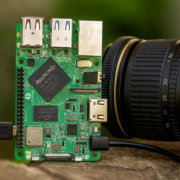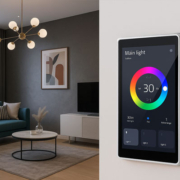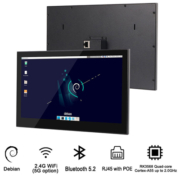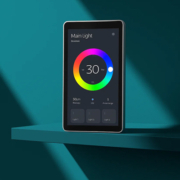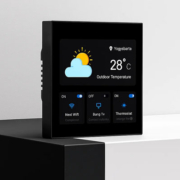Building the Brain of Smart Homes: A Complete Guide to Multi-Functional Control Panels
In the rapidly evolving world of smart home technology, multi-functional smart home panels have become the nerve center of connected living. According to a report by Statista, the number of connected smart home devices and sensors worldwide is expected to reach 30.9 billion by 2025. In this landscape, developing an advanced smart home control panel is no longer a luxury—it’s a necessity.
As the interface between users and their smart ecosystem, a well-designed control panel transforms a regular home into an intelligent, integrated environment. For forward-thinking brands and solution providers, this represents a critical opportunity to gain market share, enhance user satisfaction, and differentiate through intuitive automation, seamless connectivity, and adaptable systems.
What Is a Smart Home Control Panel?
A smart home control panel is a visual and interactive hub that manages real-time and historical data from smart devices, offering users a centralized way to monitor, control, and automate their environment.
It displays key data through intuitive UI components such as charts, icons, and notifications, enabling real-time insights and device control. From lighting to HVAC, security, intercom, and scene automation, the panel provides a unified interface that integrates various functions into one platform.
Why Build a Smart Home Panel?
In a fragmented device ecosystem, a central control panel streamlines operations by:
- Enabling seamless interoperability between different devices (e.g., thermostats, door locks, cameras)
- Supporting multiple communication protocols like Zigbee, Z-Wave, Wi-Fi, RS485, and Bluetooth
- Enhancing security through unified access and monitoring
- Offering a responsive, visual interface for quick, informed decision-making
- Creating a scalable platform for future upgrades and third-party integrations
By building a reliable smart panel, brands can deliver a superior experience that aligns with rising consumer expectations for convenience, safety, and energy efficiency.
Architecture Types for Smart Panels
When developing a smart home panel, three common architectures are considered:
-
Cloud-based / Independent Panel
Devices communicate via a cloud gateway; the panel interacts with servers rather than directly with hardware. -
Embedded Panel
Devices are built with local control panels (e.g., touch control interfaces on the devices themselves). -
Direct-Connect Panel
Devices interact directly with the panel via Bluetooth, RS485, or Zigbee.
Popular IoT Connectivity Types
The effectiveness of a smart panel hinges on reliable data transmission. Key options include:
- Zigbee / Z-Wave: Ideal for short-range, low-power mesh networking.
- Wi-Fi: Supports high bandwidth but consumes more power.
- LPWAN: Useful for long-distance, low-data-rate applications.
- 5G / LTE: High-speed but power-hungry; suitable for remote or mobile control.
- RS485 / Ethernet: Stable wired connections for mission-critical smart systems.
- BLE (Bluetooth Low Energy): Great for short-range, mobile-linked devices.
Key Considerations for Developing a Smart Panel
Compatibility & Integration
Your panel must support a broad range of devices, platforms, and standards to ensure seamless interoperability.
User Interface Design
A good panel is intuitive, responsive, and designed for users of all ages. It should include:
- Large, responsive touchscreens
- Icon-based navigation
- Support for multi-language interfaces
- Voice control integration (e.g., Alexa, Google Assistant)
MVP & Scalability
Your panel should be modular—ready to support new protocols, third-party devices, and OTA firmware updates without full hardware redesigns.
Essential Hardware Components
1. Processor & RAM
A powerful CPU (e.g., ARM Cortex-A55) with at least 2GB RAM ensures smooth multitasking and device management.
2. Touch Display
- Minimum resolution: 1280×800
- Size: 4″ to 10″ for flexibility in residential/commercial environments
- IPS or capacitive multi-touch for better usability
3. Connectivity Options
- Wi-Fi / Ethernet for internet access
- Zigbee / Z-Wave / RS485 for local smart device interaction
- USB & GPIO slots for future expansion
4. Power Supply
- PoE (Power over Ethernet) simplifies cabling
- Built-in battery for backup during outages
5. Voice & Sensor Integration
- Microphone + Speaker for AI assistant commands
- Ambient light / proximity sensors to auto-adjust brightness and wake-up behavior
6. Security & Authentication
- Biometric access (facial recognition, fingerprint)
- Hardware-level encryption to protect user data
7. Mounting Options
Support for wall-mounting and desktop brackets ensures the panel fits different environments easily.
Why Choose Portworld?
At Portworld, we specialize in designing and manufacturing customized smart home control panels that balance performance, design, and user experience.
OEM/ODM Customization Services
- Hardware customization (board layout, screen size, housing design)
- Firmware development (Android/Linux BSP, OTA support)
- Branding and packaging per your requirements
Powerful Product Line
We offer flexible product lines such as:
- YC-SM08M / YC-SM08P: 8-inch Android-based smart panels powered by RK3566, supporting PoE, RS485, Zigbee, and Bluetooth
- Multi-size options: 4″,5″,5.5″,6″,7.6″, 8″,10.1″, 11.6″, and 14″
- Industrial and commercial grade models for hotels, homes, and office automation
Full Stack Support
From hardware development to BSP/SDK customization and app-level integration, we deliver complete, turnkey smart control panel solutions tailored to your project goals.

